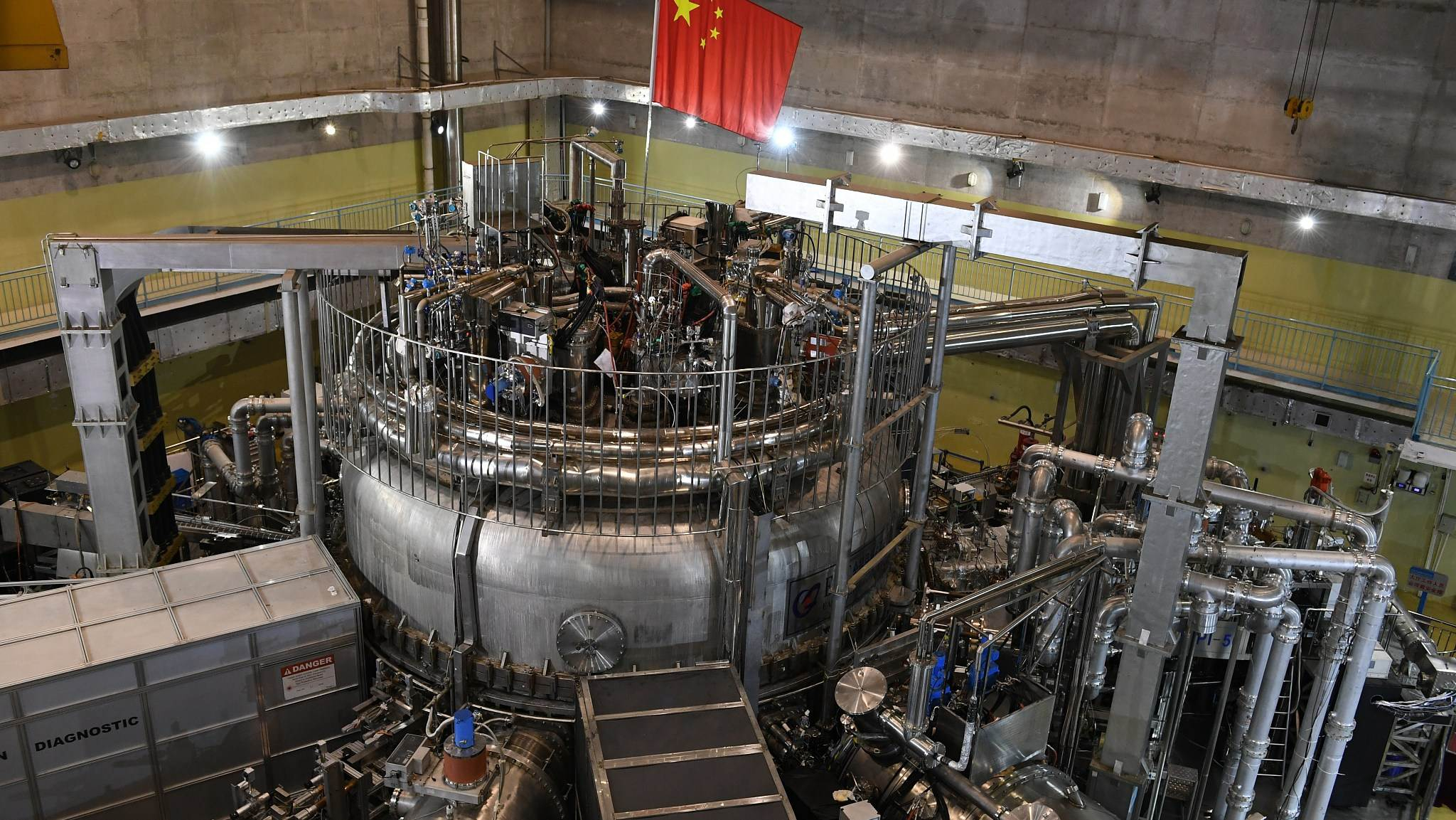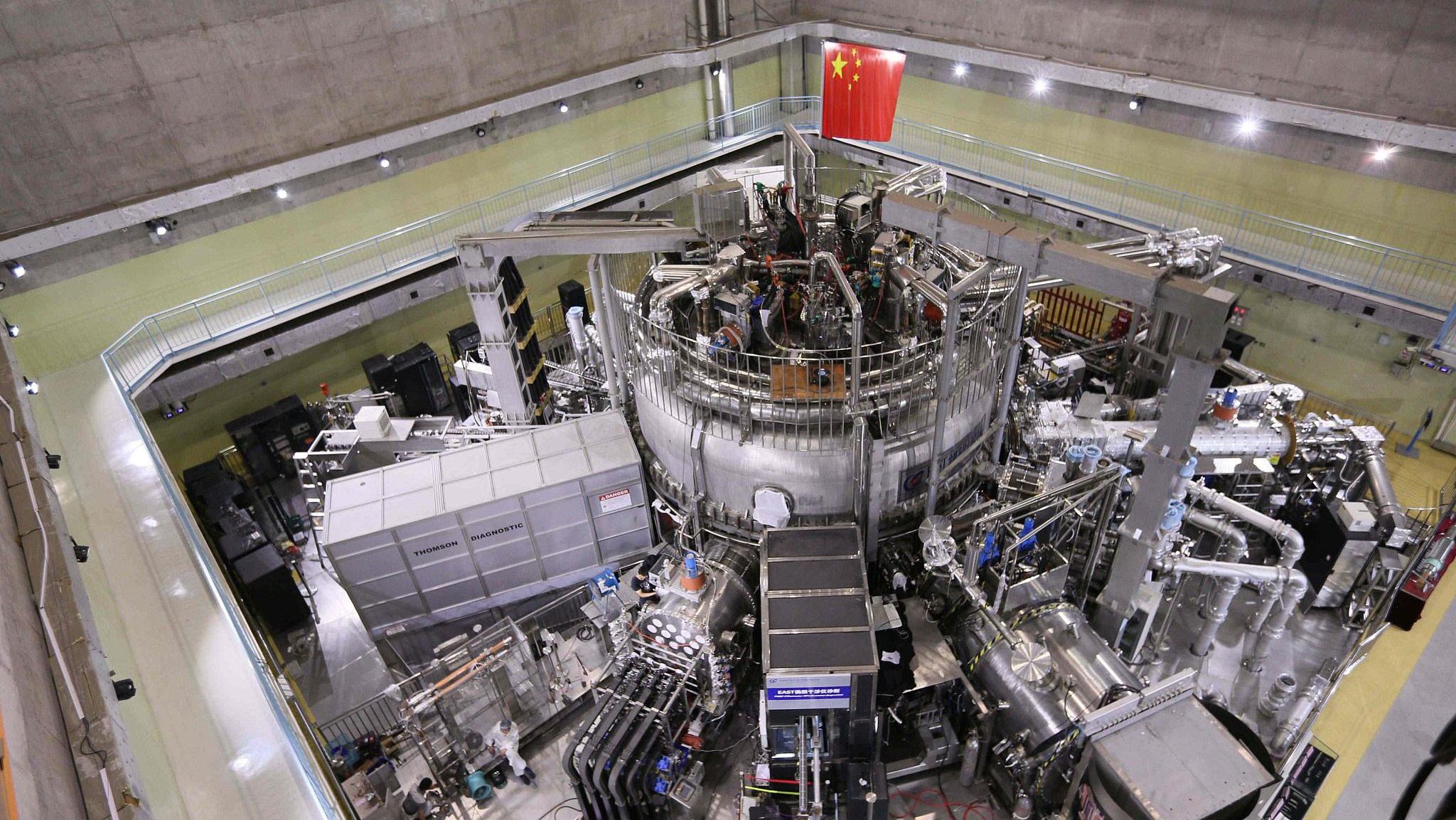
Tech & Sci
13:27, 13-Nov-2018
China's 'artificial sun' operates at temperatures of 100 million degrees Celsius
Updated
13:12, 16-Nov-2018
By Pan Zhaoyi
00:45

China is making leaps and bounds in developing its "artificial sun," known as the Experimental Advanced Superconducting Tokamak (EAST) by operating nuclear fusion reaction at temperatures of 100 million degrees Celsius, according to the Institute of Plasma Physics, affiliated with the Chinese Academy of Sciences, on Monday.
The EAST, a device independently designed and developed by Chinese scientists to harness the energy of nuclear fusion, is taking a step closer to maintaining a more stable fusion reaction as long as possible and at an even higher temperature.
In a world faced with the dilemma of an increasing demand for electricity and a worsening environment, China is working on a fusion project that can discharge a tremendous amount of clean energy without producing byproducts that are harmful to the ozone layer.

Experimental Advanced Superconducting Tokamak (EAST) /VCG Photo
Experimental Advanced Superconducting Tokamak (EAST) /VCG Photo
Unlike the fission reaction, fusion is able to provide cheap energy that produces far less immediate pollution and leftover waste material than existing power generation methods. More importantly, it can be done in a safer way, when considering that the fusion power plant requires the combining of two nuclei instead of splitting the atom the way fission does, which may leave toxic waste that can last for tens of thousands of years.
According to Song Yuntao, deputy director at EAST, the device they invented is controllable, he can shut down the power supply at any time and there won't be any nuclear disaster risk.
Although the writ large advantages, the requirements for the technology are hard to meet. The device needs to survive temperatures of hundreds of millions of degrees Celsius, and do for an extended period of time in order for the reaction to work.
After setting the world record by sustaining 101.2 seconds of steady-state H-mode operation of the EAST in 2017, Chinese scientists turned their eyes to research the physical mechanism of the core under high power heating in 2018.
Achievements realized in 2018 in EAST experiments provides important and direct experience for the construction of the International Thermonuclear Experimental Reactor (ITER), a large international scientific project that is a global collaboration of 35 countries including China, Russia and the US.
It also will provide experimental evidence and scientific support for China's ongoing China Fusion Engineering Test Reactor (CFETR) project, the institute said.
(With input from Global Times)

SITEMAP
Copyright © 2018 CGTN. Beijing ICP prepared NO.16065310-3
Copyright © 2018 CGTN. Beijing ICP prepared NO.16065310-3